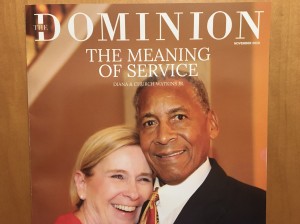 November is a generally thankful month. Its arrival in Texas brings a full measure of relief, seasoned with a dash of hope, if not of the political or epidemiological variety this time around, then at least the meteorological kind. As temperatures dip into the comfortable range for the first time in months, we watch with glee as electric bills no longer require second mortgages and we get to once again make lighthearted fun of our friends and relatives up north. But it’s also at this time of year that we pause to reflect on, and give thanks for, the contributions and sacrifices of our neighbors who have served in one (or in occasional cases, more than one) branch of the U.S. military. Veteran’s Day is officially November 11th, but here in San Antonio—home to the largest concentration of military installations in the country—we tend to stretch out the recognition and festivities for the entire month. All of which makes this profile—of retired U.S. Air Force Colonel and long-time Dominion resident Church Watkins Jr. all the more appropriate.
November is a generally thankful month. Its arrival in Texas brings a full measure of relief, seasoned with a dash of hope, if not of the political or epidemiological variety this time around, then at least the meteorological kind. As temperatures dip into the comfortable range for the first time in months, we watch with glee as electric bills no longer require second mortgages and we get to once again make lighthearted fun of our friends and relatives up north. But it’s also at this time of year that we pause to reflect on, and give thanks for, the contributions and sacrifices of our neighbors who have served in one (or in occasional cases, more than one) branch of the U.S. military. Veteran’s Day is officially November 11th, but here in San Antonio—home to the largest concentration of military installations in the country—we tend to stretch out the recognition and festivities for the entire month. All of which makes this profile—of retired U.S. Air Force Colonel and long-time Dominion resident Church Watkins Jr. all the more appropriate.
Church comes from a long line of Tennesseans, and if you dig far enough back into his family history, you will find nineteenth-century slave families, along with a great grandmother whose family name was Church, which explains his own unusual moniker.
“My folks come from the Nashville area,” he says, “and my father’s grandmother’s family name was Church. And so Grandma wanted my father and I to both have the same name. Now my son is Church the third, and my grandson is Church the fourth.”
Born in Nashville during the height of segregation, it never occurred to anyone in the family that they might be poor. Sandwiched between two sisters—one three years younger, the other three years older—Church recalls spending the first twenty years of his life living in the same house, and learning to drive at an early age, primarily to deliver groceries to the customers of their family store.
“I guess you’d say we were lower middle income at that time. We were certainly better off than some of the folks who shopped at the store. My father bought the store on Whites Creek Pike when I was eight years old, and it’s a good thing he had the foresight to do so. He died a couple of years later, and that business supported us for the rest of my childhood, and my mother for a good while after that. After my father passed, the neighbors tried to tell my mother she couldn’t run a store like that by herself. But she did—well, we all did. That grocery store put us all through college.”
The family lived in North Nashville, and Church and his sisters are graduates of nearby Pearl High School, an institution that produced more than its share of musicians and politicians, influences that would prove important in Church’s collegiate life. The family farm was a few blocks from the grocery store on Haynes Street, and across the street from the grocery was the American Baptist Theological Seminary, one of whose students was a young John Lewis, future civil rights activist.
“We used to see John in the store all the time,” Church recalls. “He was the same age as my younger sister and she knew him pretty well.”
After high school, Church attended Tennessee State University, where he studied civil engineering but also continued playing trumpet, having tried his hand at all of the brass instruments while in high school. Indeed, he put so much effort into the musical side of his collegiate career that at one point a professor pulled him aside and discreetly suggested that his efforts might be better spent focusing on his engineering studies rather than on music. Realizing early on that, since he was competing with plenty of full-time music majors, a musical career wasn’t likely in the offing, Church took the professor’s advice and not only refocused his engineering efforts, but also began to study in earnest for the ROTC Stay-Nine exam. Passing this rigorous exam meant that starting in Junior year, he would be eligible for advanced ROTC and the $30/month stipend that came along with it: big money in those days!
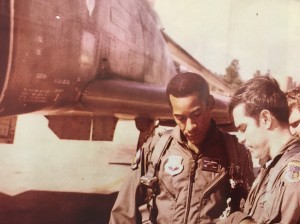 Having worked throughout his high school summers doing masonry and other construction jobs around the neighborhood, Church thoroughly enjoyed his civil engineering studies. Once he graduated, he took a position with the California Highway Department during the summer before his military commission began. Following a summer spent conducting tests on concrete, asphalt, and other construction materials, Church’s first official military position would be at Wright Patterson AFB, OH for a brief introductory stint before being shipped off to Bolling AFB in Washington DC, where he led a small team of civil engineers. During his thirty-year Air Force career, Church, like anyone who spends time in the military, would spend his fair share of time at installations around the country and the world, including Ellsworth AFB, SD to help set up a new ICBM installation, followed by Maxwell AFB, AL for Squadron Officer School, where, because of the extremely strained race relations of the time, he was warned not to leave the base with his colleagues.
Having worked throughout his high school summers doing masonry and other construction jobs around the neighborhood, Church thoroughly enjoyed his civil engineering studies. Once he graduated, he took a position with the California Highway Department during the summer before his military commission began. Following a summer spent conducting tests on concrete, asphalt, and other construction materials, Church’s first official military position would be at Wright Patterson AFB, OH for a brief introductory stint before being shipped off to Bolling AFB in Washington DC, where he led a small team of civil engineers. During his thirty-year Air Force career, Church, like anyone who spends time in the military, would spend his fair share of time at installations around the country and the world, including Ellsworth AFB, SD to help set up a new ICBM installation, followed by Maxwell AFB, AL for Squadron Officer School, where, because of the extremely strained race relations of the time, he was warned not to leave the base with his colleagues.
Like most who served in the military in the sixties, Church did his obligatory stint in Vietnam (1967), serving at Cam Ranh Bay Air Base during the Tet Offensive, serving as Chief of Programs with the 12th Civil Engineering Squadron. He then made his way from Southeast Asia to Wiesbaden, Germany, where he oversaw engineering operations for Air Force Headquarters Europe (In another bit of serendipity, it turned out that Diana, Church’s future wife, was there as well—deployed with her then first husband—though the two wouldn’t meet until many years later). Eventually (1975) Church found himself in the extreme northern wilds of Thule AFB, Greenland, where a chief engineering position eventually turned into him being appointed base commander due to a serious illness for the original installation commander.
“It was very remote,” he recalls. “We had to provide pretty much everything ourselves—electricity, roads, plumbing. We even once had to prepare the base for a visit by the Queen of Denmark, including painting royal insignia on the base buildings.”
Church was a Lt. Colonel at the time of his deployment to Thule, and he credits his work there for his promotion to full Colonel upon his return to the states. Following his year in the far north, Church would do tours of duty at Colorado Springs (NORAD) and the National Defense University at Fort McNair (“like getting a Masters degree in geopolitical science”). After that he served two years as commander of Shaw AFB, SC, and, finally, an extended tour at Kelly AFB, here in the Alamo City, where he served for seven years as Director of Engineering and Services, Electronic Security Command, before retiring from the USAF in 1988.
Throughout his thirty-year military career, Church received numerous recognitions for his service, including the Bronze Star, the Joint Services Commendation Medal, four Meritorious Service awards, the Air Force Commendation medal, and the Vietnamese Medal of Honor.
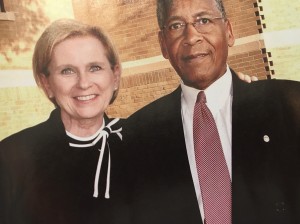 The transition from decades in the military to civilian life can prove challenging, but Church dove into his new life with the same verve and skill that had characterized his Air Force years. He began by buying houses to rent and also by interviewing for full-time positions. It was during one of these interviews that he caught the attention of a manager who was recruiting for financial advisors, an opportunity that turned out to be an excellent fit with the MBA Church had earned at The George Washington University during his Air Force career. Years later, Church would still be providing financial advice, ending that phase of his career as District Manager for Waddell and Reed Financial Services.
The transition from decades in the military to civilian life can prove challenging, but Church dove into his new life with the same verve and skill that had characterized his Air Force years. He began by buying houses to rent and also by interviewing for full-time positions. It was during one of these interviews that he caught the attention of a manager who was recruiting for financial advisors, an opportunity that turned out to be an excellent fit with the MBA Church had earned at The George Washington University during his Air Force career. Years later, Church would still be providing financial advice, ending that phase of his career as District Manager for Waddell and Reed Financial Services.
Along the way, Church also started a new business, Watkins Engineering Consultants, as a result of which he landed an assignment at Lackland AFB overseeing the construction of a new high school. This is where Diana at long last reenters the picture. She was the administrative assistant and HR coordinator for the superintendent of the Lackland ISD school system, and Church, having had secretaries throughout his military career, had never learned to type.
“I asked her if she would mind typing up a few letters for me, and luckily she agreed. I asked how much I owed her, but she said she was happy to do it. I thought that was pretty decent of her, and before long she was helping me with the houses I was leasing and with various other work at the engineering company. One day I had been living the bachelor life, driving around in my red Corvette (upgraded these days to his newest favorite ride, a Ferrari 458 Italia). Next thing I knew, we were dating, and we continued doing so for about seven years.”
And then came one fateful day in 2004 when the couple was driving from one house to another, cleaning and repairing, planning on nothing more than a good day’s work. Diana tells the rest of the story best:
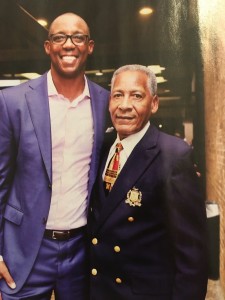 “I was in sweats—no makeup or anything—and Church says to me ‘You know we could just drive down to the courthouse and get a marriage license’—which we proceeded to do. Only then, while we’re standing there in our work clothes, the clerk says ‘You guys can just go ahead and get married right now if you want to.’ Well, when Church gets nervous, his upper lip gets a little sweaty. I looked over at him and sure enough . . . But we took the form, walked into the courtroom, and there was the judge. She took us back into her chambers and asked us if we had rings, which we did not. ‘Well,’ she said, ‘just pretend then.’ So we did, and just like that we returned to our day as newlyweds. I would not have wanted it any other way,” Diana says.
“I was in sweats—no makeup or anything—and Church says to me ‘You know we could just drive down to the courthouse and get a marriage license’—which we proceeded to do. Only then, while we’re standing there in our work clothes, the clerk says ‘You guys can just go ahead and get married right now if you want to.’ Well, when Church gets nervous, his upper lip gets a little sweaty. I looked over at him and sure enough . . . But we took the form, walked into the courtroom, and there was the judge. She took us back into her chambers and asked us if we had rings, which we did not. ‘Well,’ she said, ‘just pretend then.’ So we did, and just like that we returned to our day as newlyweds. I would not have wanted it any other way,” Diana says.
Deciding that maybe it would be a good thing to notify the children of their spontaneous nuptials, they made a round of quick calls. One of Diana’s sons was working at a restaurant at the time and he told them to swing by when they were done working. They agreed, and when they arrived, her son had a cake prepared. “That was our reception,” Diana says. The couple has been married sixteen years this December.
Church and Diana immediately began searching for a new home, and they looked at seven of them here in the Dominion before eventually falling in love with their house in The Gardens. Years later, both long retired and still living in The Gardens, it came to pass that Church was diagnosed as requiring a kidney transplant. As luck would have it, Diana was a perfect match, and so the couple can say—more truthfully than most—that they are now genuinely a part of one another. Church notes that his second transplant anniversary coincided exactly with that of former Spurs forward Sean Elliot, who, having received a kidney from his own brother in 1999, had just celebrated his twentieth transplant anniversary at Methodist Hospital.
Church and Diana now travel a good deal (Vietnam, Russia, Cambodia, Italy, and elsewhere) and also enjoy having one of their grandsons living with them. They return to Nashville every Thanksgiving and keep in touch with their numerous children and siblings (two for Church, five for Diana). Asked about regrets and life lessons learned, both point to the need to focus on the challenges of relationships, particularly in cases of military life, where long deployments and incessant travel can strain even the most stable marriages.
“I was extremely satisfied and happy with my military career,” Church says. “It’s certainly a long way from that little grocery store in Nashville. We really enjoy living here and we plan to do so for the rest of our lives.”
And so, following a long life of travel, adventure, and service to his country, Colonel Church Watkins Jr. made his way to San Antonio to find a home, a second career, and a partner for life. Who could ask for more than that?






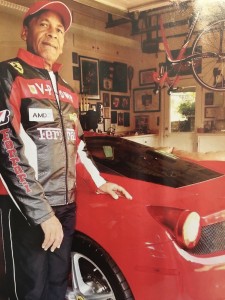
1 Comment
Very nice story over 33 years since We have seen each other Go Bless!